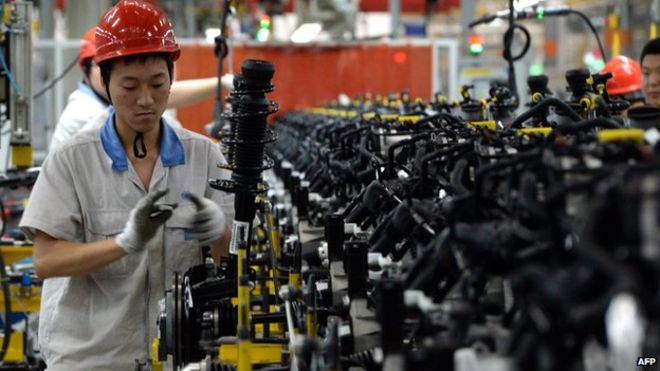China’s “new normal” in international investment agreements

CCSI | 23 May 2016
China’s “new normal” in international investment agreements
by Qianwen Zhang
At the 2014 Asia-Pacific Economic Cooperation forum, President Xi stated that the Chinese economy is experiencing a “new normal” as its growth rate has slowed. [1] This shift is also reflected in China’s evolving approach to international investment agreements (IIAs), namely that China is adapting to prevailing international investment-law standards.
First, China is taking an increasingly positive attitude toward investor-state dispute settlement (ISDS), reflected in the broadening of China’s dispute-settlement clause from determining only the amount of compensation to now addressing almost all disputes. According to statistics released by the Ministry of Commerce, there are currently 132 Sino-foreign bilateral investment treaties (BITs), of which 103 are in force. Among these, 100 were signed before January 1, 2010, and 96 came into force before that date.
Except in the case of Tza Yap Shum v. Republic of Peru in 2007 (which involved a Hong Kong citizen), prior to 2010 China and Chinese firms had not played an active role before the International Centre for Settlement of Investment Disputes (ICSID). However, in the past five years, Chinese investors have brought significant claims, and China has appeared before ICSID a few times. In January 2010, Chinese investors filed a claim against Mongolia at the Permanent Court of Arbitration. In May 2011, China faced its first ISDS claim, commenced by a Malaysian corporation, Ekran Berhad. In September 2012, a major Chinese firm, the insurer Ping An, took Belgium to ICSID arbitration. In November 2014, ICSID accepted a second claim against China, brought by a Korean investor, Ansung. In December 2014, an investment claim was accepted from a Chinese state-owned enterprise (SOE), Beijing Urban Construction Group, against the Yemeni government.
These cases suggest that Chinese investors, especially certain large SOEs, are now more inclined to resort to ISDS. SOEs’ interest in ISDS may be partly attributed to China’s “go-out” policy. Chinese firms’ rare utilization of IIAs before 2010 may be due to their unfamiliarity with, and insufficient emphasis on, ISDS. China and Chinese firms realize now the importance of ISDS and are prepared to participate in the system, respectively as respondent and as claimants.
Second, China has now adopted a broader perspective toward IIAs with respect to its treatment clauses. Though China had been opposed to pre-establishment national treatment for decades, [2] this standard has recently been adopted in several circumstances, including the China-United States (US) BIT negotiations. In September 2013, pre-establishment national treatment was introduced in the China (Shanghai) Pilot Free Trade Zone, and in the Fujian, Guangdong and Tianjin Pilot Free Trade Zones in April 2015, to test this approach in the concrete context of the China-US BIT negotiations. Foreign companies will receive pre-establishment national treatment in general, if and when the negative list approach included in China’s Foreign Investment Law (Exposure Draft) comes into force. [3] The State Council recently released its first opinion on the implementation of the negative list system of market access. [4] It can be expected, therefore, that pre-establishment national treatment and the negative list approach are set to become China’s “new normal”, representing fundamental changes to China’s IIA approach.
Third, China now seeks regional investment agreements in addition to its continuing BIT negotiations. China is one of the drivers of such agreements, e.g., the Regional Comprehensive Economic Partnership negotiations and the China-Japan-Republic of Korea free trade agreement (FTA). Thus, China is participating in the rise of trade and investment regionalism. The parallel development of Sino-foreign BITs and Sino-foreign FTAs could become a part of China’s “new normal”.
As China’s outward foreign direct investment (FDI) is likely to exceed inward FDI for the first time in 2016, each at over US$100 billion, China must better protect its foreign investors. A case in point is the 2015 China-Australia FTA, which includes ISDS provisions, in contrast to the preceding 2003 agreement between the parties. By studying other major countries with significant outward and inward FDI flows, China can gain new insights on how best to improve its own foreign investment legislation and IIA negotiations.
In conclusion, with the rise of China’s outward FDI, we are likely to see a more open attitude toward high-standards IIAs—the “new normal”.
Qianwen Zhang (cdzqw@hotmail.com) is a Ph.D. Candidate at Sichuan University Law School. The author is grateful to Huiping Chen, Stephan Schill and Wenhua Shan for their helpful peer reviews, and to Sheng Zhang for his comments. The views expressed by the author of this Perspective do not necessarily reflect the opinions of Columbia University or its partners and supporters. Columbia FDI Perspectives (ISSN 2158-3579) is a peer-reviewed series.
Footnotes:
[1] “Xi’s ‘new normal’ theory”, Xinhua, November 9, 2014, available at http://news.xinhuanet.com/english/china/2014-11/09/c_133776839.htm.
[2] A broadening of post-establishment national treatment can be seen in Chinese IIA policy over the past few years; see Stephan Schill, “Tearing down the Great Wall: The new generation investment treaties of the People’s Republic of China”, Cardozo Journal of International and Comparative Law, vol. 15 (2007), pp. 21-24.
[3] Ministry of Commerce, “People’s Republic of China Foreign Investment Law (draft) for public comment”, Chinese version available at http://tfs.mofcom.gov.cn/article/as/201501/20150100871010.shtml.
[4] State Council, “Opinion on the Implementation of the Negative List System of Market Access”, Chinese version available at http://www.gov.cn/zhengce/content/2015-10/19/content_10247.htm.





